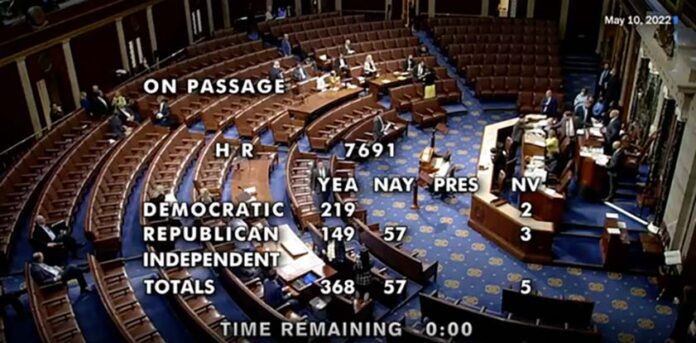According to CNN, the U.S. House of Representatives passed a $40 billion aid package for Ukraine on May 10 with 368 votes in favor and 57 votes against, all of which were cast by House Republicans. The aid package includes nearly $25 billion in military assistance.
Next, the bill will be sent to the Senate for a vote, and the final adopted version will be signed by Biden.
The latest aid bill for Ukraine has met with little resistance and is expected to be confirmed by Biden soon. The deeply divided U.S. Congress is generally united on the Ukraine issue: House Speaker Nancy Pelosi has previously said that the plan has the "strong support" of the U.S. Congress. Senate Majority Leader Schumer said on May 10 that as long as the House passed the plan, the Senate would "move quickly" to send it to Biden's desk.
According to House Democrats, the latest $40 billion aid package includes all aspects of assistance to Ukraine, including weapons, equipment, training of military personnel, logistics, intelligence assistance and various other needs.
The bill includes an increase in Presidential drawdown authority funding (PDAF) to $11 billion from the $5 billion originally requested by the Biden administration. This funding money allows the administration to take military equipment and weapons from the U.S. stockpile to support Ukraine, which is one of the main ways the Biden administration has provided military equipment to Ukraine over the past 75 days of the Russian-Ukrainian conflict, such as in the $3 billion in supplemental assistance in mid-March and the $150 million in aid signed on May 6.
The bill also includes $6 billion in Ukrainian Security Assistance Initiative funds, or USAI, which is another way the Biden administration is providing military assistance to Ukraine. The administration could use USAI funds to purchase weapons from arms dealers and then provide those weapons to Ukraine. This method does not draw directly from the U.S. stockpile.
By the Observer's count, this $40 billion aid package to Ukraine includes nearly $25 billion in military assistance. In addition to the aforementioned $11 billion PDAF and $6 billion USAI, there is $3.9 billion for the operational costs of the U.S. European Command; and $4 billion in foreign military financing to provide support to other affected countries outside of Ukraine.
In addition, the bill plans to use $8.7 billion to replenish the U.S. Treasury's weapons stockpile. This portion is not counted in direct military assistance.
Initially, it was Biden who asked Congress on April 28 to approve $33 billion in "emergency supplemental funding for FY 2022" to provide military and humanitarian assistance to Ukraine. Biden bluntly stated that previously approved congressional aid to Ukraine was almost exhausted and that "basically, we're out of money.
Congressional Democrats then recently added $3.4 billion in military aid and $3.4 billion in humanitarian aid to that amount, pushing the total up to $39.8 billion.
Since the outbreak of the Russia-Ukraine conflict, U.S. aid to Ukraine alone has reached $3.8 billion in weapons and equipment.
Biden also picked May 9, the anniversary of Russia's victory in the Patriotic War, to sign the high-profile Democratic Defense of Ukraine Lend-Lease Act. Lend-Lease was originally used in World War II to quickly aid the Allies in their fight against the Nazis. This new version of Lend-Lease for Ukraine not only greatly simplifies the process of providing U.S. military assistance and other necessary resources to Ukraine, but is also highly symbolic and is seen as designed to give the U.S. and Ukraine a veneer of "justice" and "humiliate "Russia has now gone to its opposite.








































